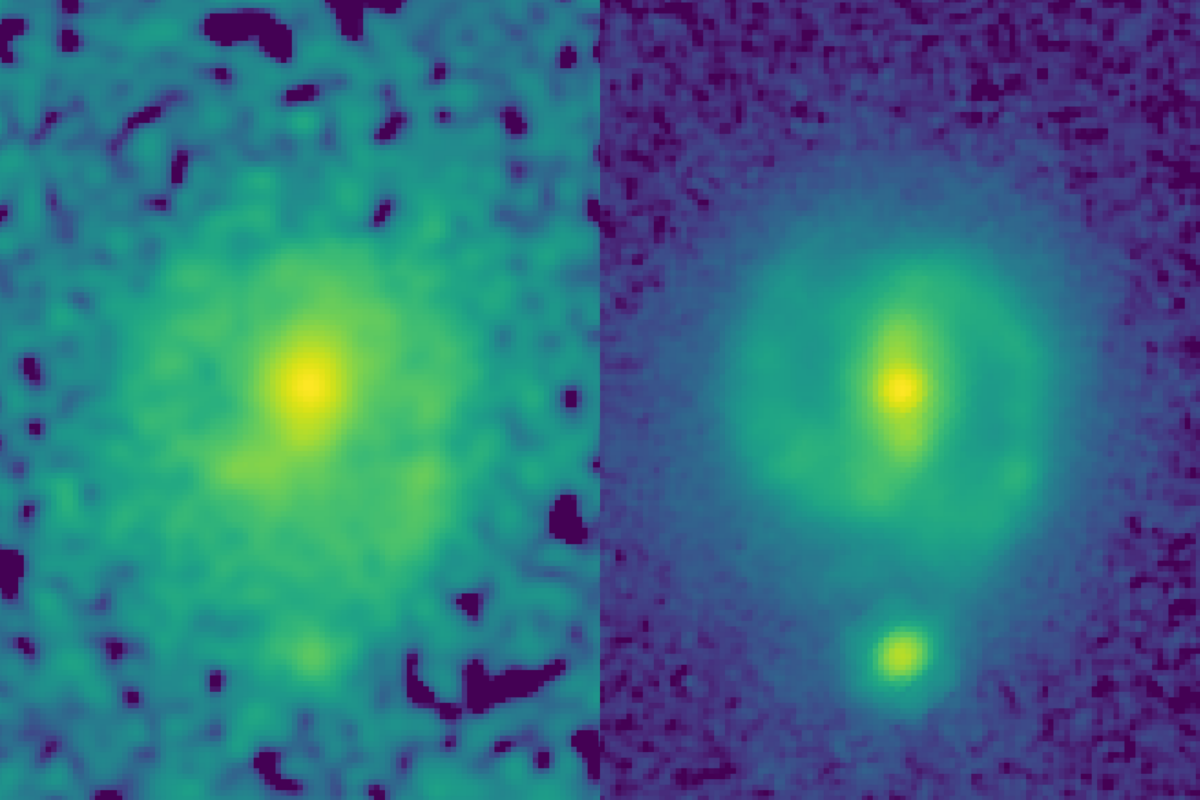For the first time, the latest images from the James Webb Space Telescope (JWST) of NASA show galaxies with stellar bars—which are elongated structures of stars extending from the middle of galaxies into their outer disks—while the universe was just 25% of its current age.

The power of JWST to map galaxies at high resolution and at longer infrared wavelengths than Hubble allows it look through dust and unveil the underlying structure and mass of distant galaxies. This can be seen in these two images of the galaxy EGS23205, seen as it was about 11 billion years ago. In the HST image (left, taken in the near-infrared filter), the galaxy is little more than a disk-shaped smudge obscured by dust and impacted by the glare of young stars, but in the corresponding JWST mid-infrared image (taken this past summer), it’s a beautiful spiral galaxy with a clear stellar bar. Image Credit: NASA/CEERS/University of Texas at Austin
The discovery of these barred galaxies, identical to the Milky Way, this early in the universe will lead astrophysicists to improve their galaxy evolution theories.
Before JWST, images from the Hubble Space Telescope had never sensed bars from these young epochs. In a Hubble image, one galaxy, EGS-23205, is just over a disk-shaped smudge, but in the corresponding JWST image captured this past summer, it is a gorgeous spiral galaxy with a clear stellar bar.
“I took one look at these data, and I said, ‘We are dropping everything else!’” said Shardha Jogee, Professor of Astronomy at The University of Texas at Austin. “The bars hardly visible in Hubble data just popped out in the JWST image, showing the tremendous power of JWST to see the underlying structure in galaxies,” she stated, explaining data from the Cosmic Evolution Early Release Science Survey (CEERS), headed by Steven Finkelstein, UT Austin Professor.
The research group also found another barred galaxy, EGS-24268, from around 11 billion years ago, making two barred galaxies present long back in time than anything previously discovered.
The researchers underline these two galaxies and present examples of four other barred galaxies from over 8 billion years ago. This article was published in The Astrophysical Journal Letters.
For this study, we are looking at a new regime where no one had used this kind of data or done this kind of quantitative analysis before. So everything is new. It’s like going into a forest that nobody has ever gone into.
Yuchen “Kay” Guo, Study Lead Author and Graduate Student, The University of Texas at Austin
By funneling gas into the middle regions and furthering star formation, bars serve a critical role in the evolution of the galaxy.
Bars solve the supply chain problem in galaxies. Just like we need to bring raw material from the harbor to inland factories that make new products, a bar powerfully transports gas into the central region where the gas is rapidly converted into new stars at a rate typically 10 to 100 times faster than in the rest of the galaxy.
Shardha Jogee, Professor, Astronomy, The University of Texas at Austin
Also, bars aid in the growth of supermassive black holes in the centers of galaxies by directing the gas part of the way.
“This discovery of early bars means galaxy evolution models now have a new pathway via bars to accelerate the production of new stars at early epochs,” Jogee added.
JWST can disclose features in farther galaxies better than Hubble for two reasons: Firstly, its bigger mirror offers a greater light-gathering capacity, enabling it to look further and with better resolution. Secondly, it can observe past dust better as it works at longer IR wavelengths in comparison to Hubble.
Undergraduate students Eden Wise and Zilei Chen served an important role in the research by visually analyzing hundreds of galaxies in search of those that seemed to have bars, which aided in narrowing the list to a few dozen for the other scientists to examine with a more concentrated mathematical method.
Steven Finkelstein, Micaela Bagley, and Maximilien Franco are other co-authors from UT Austin. Several other co-authors from other institutions come from the US, the UK, Japan, Spain, France, Italy, Australia, and Israel.
Roland K. Blumberg Endowment in Astronomy, the Heising-Simons Foundation, and NASA provided funding for this study in part. This study depended on resources at the Texas Advanced Computing Center, along with Frontera, the most efficient supercomputer at a US university.